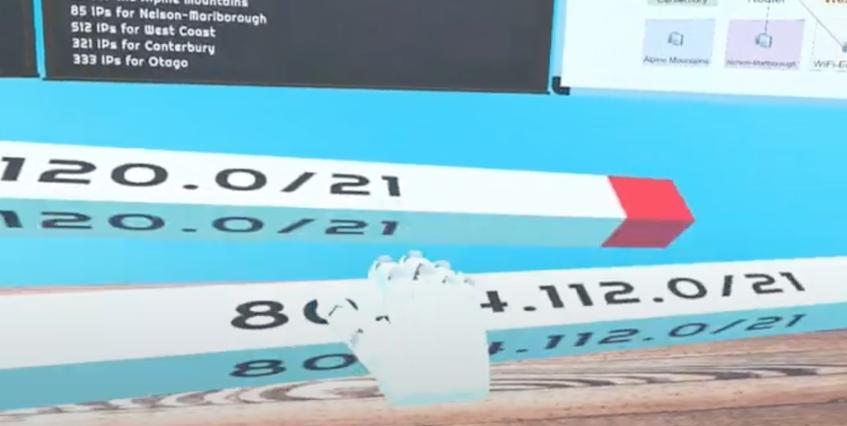Recently, Ohio University Alum Dr. Douglas Bowie discovered that IT students learning binary math and mastering IP subnetting can experience less stressful learning when virtual reality (VR) technology is incorporated into the curriculum. When Dr. Bowie was earning his masters in communication technology and policy, he believed there had to be a better way to learn subnetting and binary math. For his recent doctoral dissertation, Dr. Bowie decided to see if utilizing VR could offer a more engaging program which would enable students’ to better comprehend abstract concepts . Ultimately, while students may not learn more deeply through a VR based learning process, utilizing VR technologies decreases students’ mental strain and learning stress.
Understanding binary math is essential in the realm of IT; these formulas lay a foundation for fundamental concepts such as computer architecture, data representation, and digital logic. The ability to manipulate binary numbers and comprehend coded data is needed when working in networks or programming. Subnetting, on the other hand, remains a challenging concept for many IT students. IP subnetting consists of dividing a larger network into smaller subnets in order to issue IP addresses and aid in network management. When learning IP subnetting, subjects must have concrete comprehension of binary math.
Essentially, Dr. Bowie enlisted McClure students from two separate ITS classes for testing while dividing pupils into two learning groups. These sections consisted of those learning from traditional means (the control group) and students learning through VR applied technology. Both groups were pre and post tested to weigh learning difficulty using a system known as a NASA TLX subjective measurement index. NASA TLX tests record participant’s mental effort, frustration, and physical efforts while learning. When completing a NASA TLX test, students rate the mental and physical difficulties from learning on a scale of 1-20, with 20 regarded as the most challenging.
Next, Dr. Bowie conducted select interviews based on the quantitative data from individual outlier scores. Overall, the results showed that students learning with VR recorded more physical hardship compared to the control group because the VR controllers were too large to hold correctly. Additionally, some subjects claimed that the VR experience was too immersive, preventing students from connecting to core concepts; students reported struggling with the distinction between the VR program and reality, causing confusion during learning.
After comparing NASA TLX data between the control group and the students learning with VR, results from pre and post testing show that students using VR did not learn more deeply than the control group. However, data indicated that students using VR experienced less temporal pressure and less mental stress when completing tasks. A majority of those using applied VR curriculum reported improved visualization of complex concepts such as subnet division, lessening learning difficulty. Ultimately, while both groups reached similar levels of curriculum mastery, students learning through VR coursework underwent less overall mental strain during the learning process.
You can watch a full demo of the VR experience below:
If you are interested in Dr Bowie's full dissertation which includes a full description of the experimental design setup as well as the quantitative and qualitative research study you can access it through this link .
The McClure School of Emerging Communication Technologies strives to offer the best academic programs in the IT (Information Technology) , the game development and the Virtual Reality/Augmented Reality (VR/AR) industries. Our programs and certificates cover numerous aspects of the rapidly changing industries of information networking, cybersecurity , data privacy, game development , digital animation and the academic side of esports.

